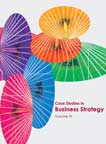The Transformation of Apple's Business Model |
ICMR HOME | Case Studies Collection
» Business Strategy Case Studies Please note: This case study was compiled from published sources, and is intended to be used as a basis for class discussion. It is not intended to illustrate either effective or ineffective handling of a management situation. Nor is it a primary information source. |
||||||||||
|
"Your typical corporate CIO must be wondering, "Why aren't there some nice new exciting applications for me?" Nothing has really changed in his world, while on the consumer side there's all this cool new stuff like iTunes and the iPod and iPhoto and iMovie. That's where the real innovation is now, and Apple is driving it." 1 - Bill Joy, Co-Founder and Former Chief Scientist at Sun Microsystems, in 2005. "Now, obviously, the company is doing much better since Jobs returned to the CEO job; but having said that, it has not yet reached the value that it was in the early 1990s." 2 - David Yoffie (Yoffie), the Max and Doris Starr Professor of International Business Administration, Harvard Business School, in 2004. IntroductionFor the fourth quarter ended September 2005, US-based Apple Computer Inc. (Apple), reported its highest quarterly earnings ever. Its revenues in this quarter were US$ 3.68 billion and profits stood at US$430 million.
This performance was in sharp contrast to Apple's position, a decade earlier. In the 1990s, Apple changed three4 CEOs in the four years between 1993 and 1997, and the company went through several reorganizations. In the financial year 1997, the company posted a loss of US$ 1,045 million and its shares were trading at all-time lows. In 1997, Steve Jobs rejoined5 the company and came up with several plans to revive its fortunes.
The Transformation of Apple's Business Model - Next Page>>
1] Schlender, Brent, "How Big Can Apple Get," Fortune, February 21, 2005.
|
Case Studies Links:-
Case Studies,
Short Case Studies,
Simplified Case Studies. |



